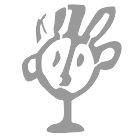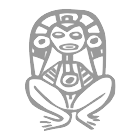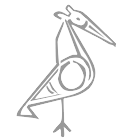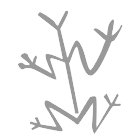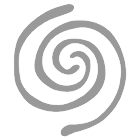
Taino symbols, images retrieved from http://tainomuseum.org/home/
The Taíno people were local artisans and worked in woodworking, pottery, weaving cotton, and carving wood, stone, bone, and shell. Pottery included everyday items such as cups, bowls, and other vessels. Their style for pottery included coloring the vessels red with white designs.
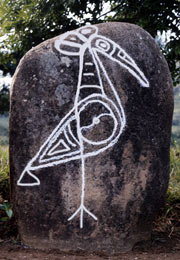
Rock petroglyph overlaid with chalk in the Caguana Indigenous Ceremonial Center in Utuado, Puerto Rico. Retrieved from http://en.wikipedia.org/w/index.php?title=Ta%C3%ADno&oldid=651745566.
After the Spanish conquest, many artifacts were left behind including tools, ceramic objects, remnants of shelter, art, religious sculptures, and petro glyphs. For the Taíno, all petro glyphs have scared meaning, and include images such as simple faces, spirals and complex frog figures. Archeologists suggest that the various distinct styles are a result from different groups and different periods.
The Taíno worked with gold for ornamental reasons, as gold did not have a monetary value. However, gold was one of the main resources the Spanish hoped to conquer in the West India region. In the journal writings of Christopher Columbus, he and his crew quickly assess the availability of gold by the jewelry and body adornment worn by the Taíno. Columbus remarks:
“… considering the indications of it among the natives who wear it upon their arms and legs, and having ascertained that it is the true metal by showing them some pieces of it which I have with me, I cannot fail, with the help of our Lord, to find the place which produces it.” –Christopher Columbus, Oct 15th, 1492
(Rouse, 1992; Columbus, 1492)

